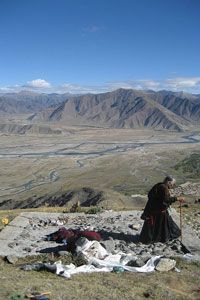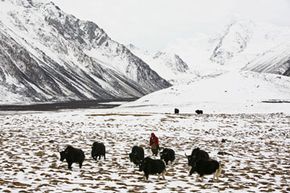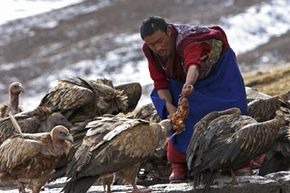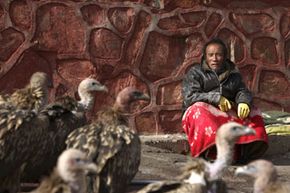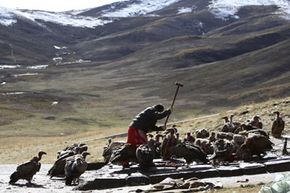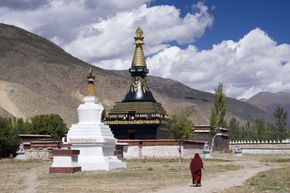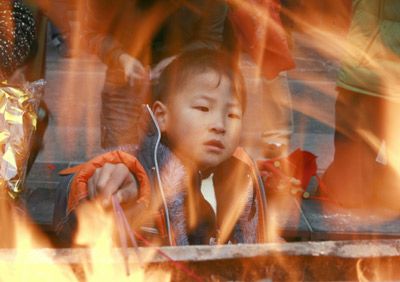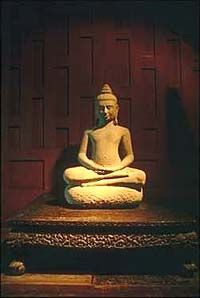The birds are already circling as the man lays the dead woman out on the stones. Naked and stiff, the corpse is as cold as the surrounding landscape and her eyes as gray as the clouds that haunt the looming Himalayan peaks. The ritual plays out in staggering isolation; high on the Tibetan plateau and amid some of the least explored wilderness on Earth.
The man draws his flaying knife and tests its sharpness with his thumb. Then he sets to work.
Advertisement
With deep, determined slices, he separates hair from scalp, then limbs from torso and flesh from bone. Ancient custom animates each movement, as he steadily reduces the corpse to mere fragments in the hallowed clearing. Vultures already surround him in huddled, black masses. Overhead, dozens more wind down the last of their spiral descent, tracing invisible circles in the air, and land at last to feast.
Indifferent to the human in their midst, the birds tear into the meal with ravenous enthusiasm. Meanwhile the man, a rogyapa, or "breaker of bodies," calmly sets aside his blade and grabs a hammer to pulverize the remaining bones.
Known as sky burial or celestial burial to outsiders, this is the Tibetan practice of jhator, or the giving of alms to birds, in which the body of the deceased is dismantled to facilitate faster and more thorough consumption by vultures. To foreign eyes, this unique funeral rite may seem callous or morbid. Yet within the spiritual and geographic contexts of Tibetan culture, it is the perfect fate for the body humans leave behind in death.
In this article, we'll investigate the process of sky burial and why in a world so concerned with preserving, incinerating and burying its corpses, the people of isolated Tibet choose to give their departed up to the creatures of the air.
Advertisement
